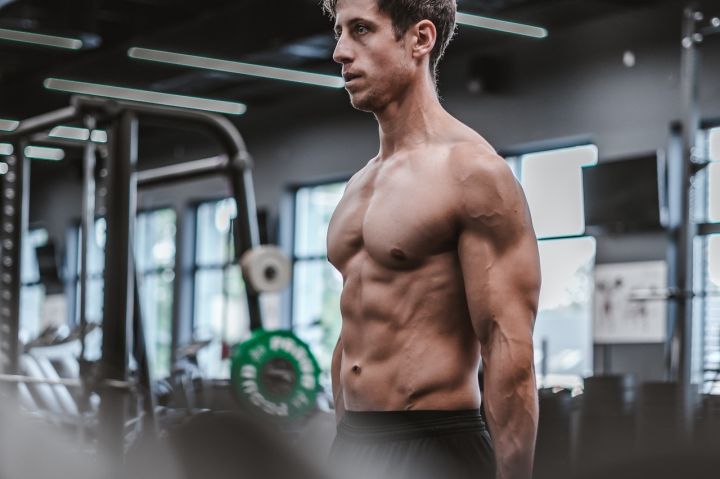Having a wide and thick back has never been the preserve of the best. But every time you look at your back in the mirror, it doesn't feel thick enough.
To build a kingly back and keep your vest up, you first need to look at how you're doing with pull-ups. Pull-ups are definitely one of the best compound movements to train your back, and getting them right is a surefire way to get it right: Build strength, stability and more effectively build muscle.

likewise, pull-ups are not as easy as you might think. Adding different variations to your workout to make them easier, or harder, and choosing heavier or lighter weights will make all the difference.
There are many muscles that can be worked through pull-ups, from the latissimus dorsi, biceps and will even stimulate the pectorals and the back of the shoulders, all depending on technique and variation.

1. Standard pull-ups
the standard pull-up, a very hardcore movement, is good for training the upper and middle back, with stimulation concentrated on the latissimus dorsi and obliques, ensuring that the pull-up and chin goes over the bar and that the back muscles are fully contracted.

pull-ups are commonly used as a test of overall body strength and fitness and are a reliable way of training to increase strength and muscle mass. The biceps will be involved in the movement of the exercise and the dominance is still controlled by the back muscles.
2. Wide grip pull-ups
the wide grip increases the difficulty of the pull-up, the pectoral muscles do not exert much force at this point, while the back muscles take on almost 100% of the work done, and you will definitely feel the burning sensation that this movement brings to the muscles.

do wide grip pull-ups, making sure that the distance between your hands is wider than shoulder width, while not holding them too far apart to prevent injury, but making sure that they are far enough apart that they will differ somewhat from standard pull-ups. All that remains is to perform the movement with all your strength.
3. Narrow grip pull-ups
the narrow grip pull-up is very different from the wide grip pull-up, not just in name but also in the muscles used and what is needed to complete it. It can be a choice of some specific movements, training to make sure you practice what you should and find which variation you are best suited to.

the narrow grip pull-up is a better representation of the biceps than the other variations (there are also reverse grip pull-ups), and the biceps are probably the main muscle to train, while the pectorals will be more involved than in the other variations, making this movement easier if you wish to strengthen your arms.
This movement can be further varied into a one arm pull up, this movement is very unstable in many cases and can lead to injury, so be careful when training.

4. Opposite grip pull-ups
the opposite grip pull-up changes the mechanics of the movement dramatically. Unlike other variations of the movement where the hand position moves with the bar, this movement uses a pull-up with an attached bar and the grip is palm to palm as in the hammer curl, training the muscles more powerfully from a different angle.

there are other advantages and disadvantages to doing opposite grip pull-ups. This grip allows for more freedom of movement in the pull-up and it is a good way to reduce the risk of injury (especially for white people). The downside is that it targets the back with less stimulation.
5. Reverse grip pull-ups
the reverse grip pull-up is probably the most pull-up friendly movement, it has the biggest difference from the standard pull-up in that the reverse grip changes the movement and the biceps do most of the work. The reverse grip pull-up is a bit like the opposite grip pull-up, but makes up for areas that may be overlooked in arm training.

to do a reverse grip pull-up, palms to yourself, just like any other pull-up movement. Contract the arm muscles until you reach the highest point of the movement (in fact this is one of the compound movements for the biceps).
6. Forward and reverse grip pull-ups
if you like pull-ups as much as you do, but don't know what to do, this may be the best movement option for you. Doing all the grip movements is the best way to promote muscle growth in the back, but if you are short of time, opt for the forward and reverse grip pull-ups.

by holding one hand in a forward grip and the other in a reverse grip, you can train different muscle groups to achieve the desired training objective. The requirement is to ensure that both sides of the body are done equally and that there is no muscle imbalance.
7. Double standing arm pull-ups
the double standing arm pull-up takes the pull-up to the extreme. This movement is extremely difficult and they are probably the best as far as training the upper body is concerned. It doesn't even require added weight and for most people, completing it is even a near impossible situation.

the technique for this move starts out almost the same as doing a pull-up, when reaching the highest point of the pull-up, the chest and triceps must fire up and push upwards until the arms are straight and the standing arms are finished for a single movement. Sounds brutal, doesn't it?

the pull-up is great, no matter what grip, style or approach you want to use. It's still one of the best compound movements out there and there's no argument about mixing them up and making the most of them!





